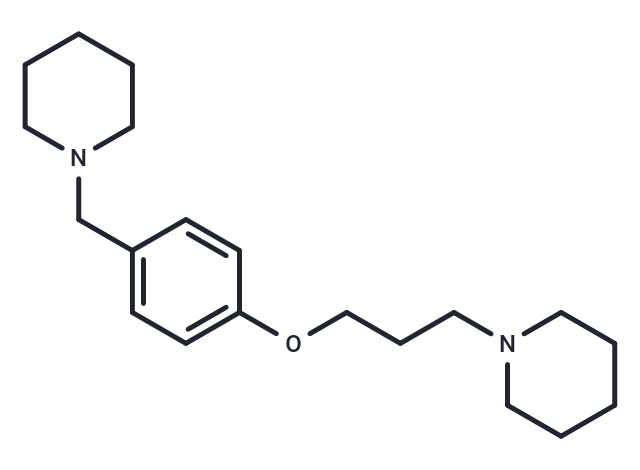Shopping Cart
- Remove All
 Your shopping cart is currently empty
Your shopping cart is currently empty

JNJ-5207852 is a novel, non-imidazole histamine H3 receptor antagonist, with high affinity at the rat (pKi=8.9) and human (pKi=9.24) H3 receptor.

| Pack Size | Price | Availability | Quantity |
|---|---|---|---|
| 5 mg | $43 | In Stock | |
| 10 mg | $68 | In Stock | |
| 25 mg | $143 | In Stock | |
| 50 mg | $283 | In Stock | |
| 100 mg | $416 | In Stock | |
| 200 mg | $592 | In Stock | |
| 1 mL x 10 mM (in DMSO) | $47 | In Stock |
| Description | JNJ-5207852 is a novel, non-imidazole histamine H3 receptor antagonist, with high affinity at the rat (pKi=8.9) and human (pKi=9.24) H3 receptor. |
| Targets&IC50 | H3 receptor (rat):8.9 (pKi) , H3 receptor (human):9.24 (pKi) |
| In vivo | JNJ-5207852 is a potent dibasic amine antagonist that binds potently to rat H3 receptors (Ki=1.2?nm), and has good brain penetration. In ex vivo binding studies in mice, the compound had an ED50 of 0.13?mg?kg?1, subcutaneously. It promotes wakefulness in rodents at 10?mg?kg?1 s.c. but not at 1?mg?kg?1, and significantly, this effect was absent in H3 receptor KO mice. JNJ-10181457 is also a dibasic amine antagonist that exhibits high-affinity binding for the rat H3 receptor (Ki=7.1?nm), promoting wakefulness in rodents and reducing cataplectic attacks in narcoleptic dogs . JNJ-10181457 improved cognitive performance in SHR pups at 10?mg?kg?1[1]. |
| Molecular Weight | 316.48 |
| Formula | C20H32N2O |
| Cas No. | 398473-34-2 |
| Smiles | C(COC1=CC=C(CN2CCCCC2)C=C1)CN1CCCCC1 |
| Relative Density. | 1.032 g/cm3 (Predicted) |
| Storage | Powder: -20°C for 3 years | In solvent: -80°C for 1 year | Shipping with blue ice. | |||||||||||||||||||||||||||||||||||
| Solubility Information | DMSO: 77.5 mg/mL (244.88 mM) | |||||||||||||||||||||||||||||||||||
Solution Preparation Table | ||||||||||||||||||||||||||||||||||||
DMSO
| ||||||||||||||||||||||||||||||||||||

Copyright © 2015-2024 TargetMol Chemicals Inc. All Rights Reserved.